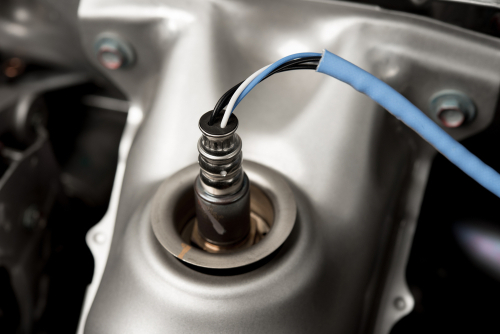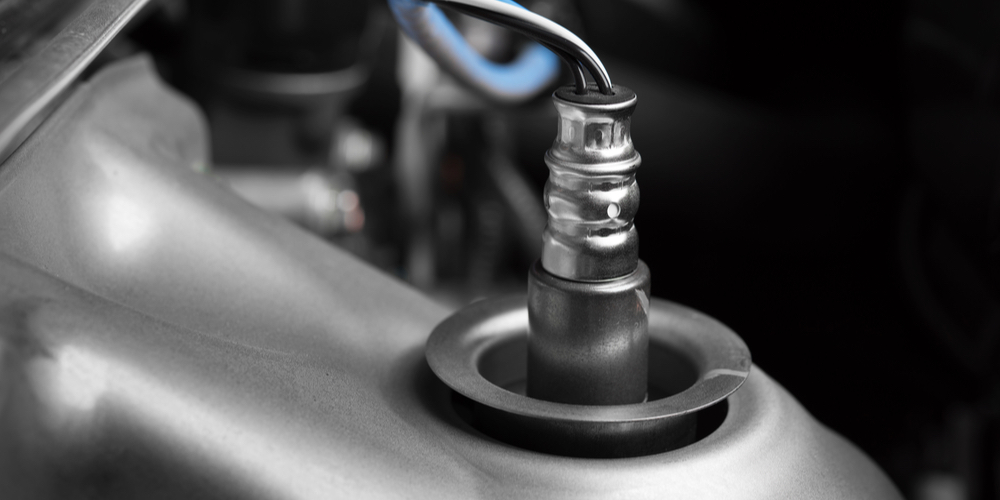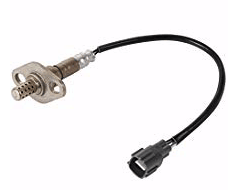Ever wondered why your check engine light is giving you the evil eye? It might be trying to tell you about a P0041 code.
This pesky little trouble code indicates that your vehicle’s oxygen sensor signals have decided to play musical chairs, swapping positions between Bank 1 Sensor 2 and Bank 2 Sensor 2.

When your car’s computer detects this swap, it triggers the P0041 code, potentially affecting your engine’s performance and fuel efficiency. It’s like your car’s brain is getting mixed signals, and we all know how confusing that can be!
Don’t worry, though.
While it may sound like a complex issue, understanding and fixing a P0041 code isn’t rocket science.
With a bit of know-how and the right tools, you can get your oxygen sensors back in line and your engine purring like a kitten again.
Key Takeaways
- P0041 indicates swapped oxygen sensor signals between Bank 1 Sensor 2 and Bank 2 Sensor 2.
- Symptoms may include decreased fuel efficiency and engine performance issues.
- Proper diagnosis and timely repairs can prevent more serious engine problems.
Unraveling the Mystery of P0041
Ah, the dreaded P0041 code. It’s like your car’s way of saying, “Hey buddy, I’m all mixed up!” But don’t worry, we’ll get to the bottom of this automotive conundrum.
So, what’s the deal with this Diagnostic Trouble Code (DTC)?
Well, it’s telling you that your O2 sensor signals are playing a game of musical chairs. Specifically, the signals from Bank 1 Sensor 2 and Bank 2 Sensor 2 have decided to swap places.

Picture this: You’re at a party, and two guests accidentally put on each other’s coats. That’s essentially what’s happening with your O2 sensors. The PCM (that’s your car’s brain) is scratching its head, wondering why the signals are coming from the wrong places.
Now, you might be thinking, “Why does this matter?”
Well, these sensors are crucial for your engine’s performance. They help your car figure out the right air-fuel mixture. When they’re mixed up, your engine might run less efficiently.
Here’s a quick rundown of what’s happening:
- Bank 1 Sensor 2 is sending signals meant for Bank 2
- Bank 2 Sensor 2 is sending signals meant for Bank 1
- Your car’s computer is very confused
Don’t panic! This issue is usually fixable.
It could be as simple as a wiring mix-up or as complex as a faulty sensor. Either way, you’ll want to get it checked out to keep your car running smoothly.
Symptoms of a P0041 Error
Hey there, gear heads! Ever had your car act like it’s had one too many oil martinis? Well, that might just be your P0041 error code showing its ugly face.
First things first, you’ll probably see that pesky Check Engine Light illuminating your dashboard like a Christmas tree. Don’t ignore it, folks – it’s your car’s way of crying for help!
You might notice your ride’s got a case of the shakes. That’s right, rough idling is a common symptom. It’s like your engine’s doing the cha-cha when it should be smooth as butter.
Feeling a bit sluggish? Your car might be too. Decreased engine power can make you feel like you’re driving a golf cart instead of your trusty steed.
And let’s not forget about the dreaded stalling. Nothing’s worse than your car deciding to take a nap in the middle of traffic.
Lastly, if you’re making more trips to the pump than usual, blame it on increased fuel consumption. Your wallet won’t be happy, but at least you know why!
Remember, these symptoms can vary, but if you’re experiencing any of them, it’s time to get your ride checked out. Don’t let that P0041 turn your car into a drama queen!
Diagnosing the O2 Sensor Signals
Ready to play detective with your car’s oxygen sensors? Grab your trusty scan tool and let’s get cracking! This nifty gadget is your best friend when it comes to confirming the P0041 code.
First things first, plug in that scan tool and watch it work its magic. It’ll pinpoint exactly where those sneaky swapped signals are hiding between banks 1 and 2. It’s like giving your car a lie detector test!
Now, don’t put away your detective hat just yet.
Time for a good old-fashioned visual inspection. Get up close and personal with those O2 sensor connectors. Are they playing musical chairs? Sometimes, these little rascals get swapped during maintenance.
If everything looks shipshape, it’s time to break out the multimeter for a continuity test. This’ll help you spot any wiring issues faster than you can say “short circuit.”
Here’s a quick checklist to keep you on track:
Scan tool analysis
Visual inspection of connectors
Continuity test on wiring
Check for damaged or crossed wires
Common Causes and Fixes

You’ve got a P0041 code, eh? Looks like your oxygen sensors are playing musical chairs! Let’s dive into why this happens and how to fix it.
The most common culprit? Damaged wiring. Those pesky rodents love to chew on your car’s wires. Time to check under the hood and see if any critters have been snacking!
Connector issues can also cause this code. Your O2 sensors might be feeling a bit disconnected – like teenagers at a family reunion. Give those connectors a good once-over.
Here’s a quick list of potential fixes:
- Inspect and repair damaged wiring
- Clean or replace corroded connectors
- Replace faulty oxygen sensors
Feeling handy? You can tackle some of these repairs yourself. Start by visually inspecting the wiring and connectors. If you spot any obvious damage, that’s your ticket!
But if you’re not comfortable playing mechanic, don’t sweat it.
A professional can diagnose and fix this issue faster than you can say “catalytic converter”. They have fancy tools to pinpoint the exact problem.
Remember, replacing O2 sensors isn’t always necessary. Sometimes a good cleaning is all they need. Like giving your car a spa day!
Preventing Future P0041 Errors
Alright, let’s roll up our sleeves and keep those pesky P0041 errors at bay! You don’t want to be caught with your O2 sensors swapped again, do you?
First things first, give your engine a little TLC. Regular maintenance is key to keeping your engine performance in tip-top shape. Think of it as a spa day for your car!
Now, let’s talk about that fuel management system. Keep it clean, folks! A gummed-up system is about as useful as a chocolate teapot. Regular fuel injector cleanings can work wonders.
Got a vacuum leak? That’s like trying to drink a milkshake with a hole in your straw. Check those hoses and gaskets regularly. A little attention goes a long way!
Exhaust leaks are no joke either. They’re like your car’s version of bad breath. Regular inspections can catch these culprits before they cause trouble.
Here’s a pro tip: Take your car for a test drive now and then. It’s not just fun, it’s diagnostic! Listen for any unusual noises or performance issues.
Lastly, double-check those wiring connections. Crossed wires are great for spy movies, not so much for your O2 sensors. Make sure everything’s hooked up right and tight!
Frequently Asked Questions
Dealing with P0041 codes can be tricky, but fear not! We’ve got the answers to your burning questions about swapped O2 sensor signals. From DIY fixes to driving dilemmas, let’s dive into the world of oxygen sensors and engine codes.
What delightful steps do I take to fix a code P0041 without turning my car into a pricey paperweight?
First, grab your trusty scan tool and confirm the issue. Once you’ve pinpointed the problem, check the wiring connections between your O2 sensors and the ECU.
A simple mix-up during a previous repair could be the culprit. If the wiring looks good, you might need to replace one or both O2 sensors. Don’t worry, it’s not as daunting as it sounds!
Is it a car myth or can I genuinely mix and match Bank 1 and Bank 2 O2 sensors without causing an automotive Armageddon?
Mixing and matching O2 sensors is like trying to fit a square peg in a round hole – it’s just asking for trouble! The ECM/PCM uses specific logic to determine if the sensors are in the right place.
Swapping them will confuse your poor car’s brain and lead to that pesky P0041 code. Stick to the correct sensors for each bank, and your car will thank you with smooth performance.
Could I possibly continue driving my metal steed with a wonky O2 sensor, or would it be an epic tale of car-mageddon?
While your car won’t immediately explode, driving with swapped O2 sensor signals is like navigating with a broken compass.
Your engine’s fuel management system will be all out of whack, leading to poor fuel economy and potential damage over time.
Is my car whispering sweet nothing or does a bad catalytic converter smell a bit like trouble compared to a faulty O2 sensor?
A bad catalytic converter and a faulty O2 sensor can both cause trouble, but they have different telltale signs.
A failing catalytic converter often produces a rotten egg smell, while O2 sensor issues typically don’t have an odor.
If you’re smelling something funky, it’s more likely your catalytic converter is the culprit rather than swapped O2 sensor signals.
What entertaining tale does the P0141 code recite, and could it be connected to our infamous P0041 code bard?
The P0141 code is like the cousin of P0041 – they’re related, but not identical.
P0141 indicates a problem with the O2 sensor heater circuit in Bank 1, Sensor 2.
While it’s not directly related to swapped signals, both codes involve O2 sensors and can sometimes appear together if there’s a wiring issue affecting multiple sensors.
If an engine light were to gently glow more passionately than usual, could our friend the P0031 code be joining the fray?
Ah, P0031 – another member of the O2 sensor code family! This code indicates a low voltage issue in the Bank 1, Sensor 1 heater circuit.
While it’s not directly related to swapped signals, it’s another reminder of how important those O2 sensors are.
If you’re seeing multiple O2 sensor codes, it might be time for a thorough check of your entire sensor system.
